
Overview
The aerospace industry, a high-tech sector critical to modern transportation and defense, involves the design, development, and production of aircraft, spacecraft, and related systems and equipment. Within this domain, the application of Nitric Oxide (NO) gas detectors plays a vital role.
Nitric Oxide, a toxic gas that can be emitted during various aerospace processes, poses significant health risks and potential equipment damage. Advanced NO gas detectors are engineered to detect and measure the concentration of Nitric Oxide in real time, providing critical data for maintaining safe operational environments. These detectors utilize cutting-edge sensor technology to offer high sensitivity and accuracy, crucial for early detection and mitigation of hazardous conditions.
In aerospace applications, NO gas detectors are employed in various scenarios, including the testing of propulsion systems, manufacturing processes, and maintenance of aircraft and spacecraft. By integrating these detectors, aerospace professionals can enhance safety protocols, ensure compliance with stringent industry regulations, and protect both human and material assets. Thus, NO gas detectors represent an indispensable component in advancing the safety and efficiency of the aerospace industry.
Depending on specific features and functions, GAO Nitric oxide gas detectors are sometimes referred to as NO gas detectors, nitric oxide sensors, NO sensors, nitric oxide analyzers, NO analyzers, nitrogen monoxide detectors, NO monitoring devices, nitric oxide monitors and nitrogen monoxide sensors.
Furthermore, GAO Tek’s Nitric Oxide Gas Detectors are further grouped into:
Alarm-enabled, Handheld, High precision, Data logging, Outdoor, and Rugged
GAO Tek’s Nitric oxide gas detectors have the following applications in the aerospace industry:
- Design and Development: GAO Tek’s NO gas detectors are integral in the design and development stages of aircraft and spacecraft, ensuring that new models meet safety standards.
- Propulsion System Testing: Our detectors are used to monitor emissions during the testing of propulsion systems, ensuring that NO levels remain within safe limits.
- Manufacturing Processes: GAO’s NO gas detectors are employed in various manufacturing processes to detect and control NO emissions, protecting workers and equipment.
- Maintenance: During the maintenance of aircraft and spacecraft, our detectors help identify leaks or emissions of Nitric Oxide, ensuring ongoing safety.
- Quality Control: GAO Tek’s detectors are used in quality control processes to verify that systems are functioning correctly and safely without NO contamination.
- Regulatory Compliance: Our NO gas detectors help aerospace companies comply with stringent industry regulations regarding NO emissions.
- Environmental Monitoring: GAO’s detectors are used to monitor the environmental impact of aerospace activities, ensuring sustainable practices.
- Safety Protocol Enhancement: By integrating our detectors, aerospace professionals can significantly enhance safety protocols.
- Emergency Response: GAO Tek’s NO gas detectors provide critical data during emergencies, allowing for prompt and effective responses.
- Research and Development: In R&D labs, our detectors are used to study the effects of NO and develop better safety measures.
- Space Missions: GAO’s NO gas detectors are crucial in space missions to monitor and manage air quality in spacecraft.
- Operational Efficiency: By providing accurate and real-time data, our NO gas detectors help improve the overall operational efficiency of aerospace processes.
More information on Nitric Oxide Gas Detectors and their applications in other industries can be found on this page
This category page lists related products
Systems in Aerospace Industry utilizing Nitric Oxide Gas Detectors
Here are some popular systems in the Aerospace Industry utilizing Nitric Oxide Gas Detectors
Propulsion System Monitoring and Control
- Hardware: GAO Tek NO Gas Detectors
- Software: Real-time monitoring systems integrated with SCADA (Supervisory Control and Data Acquisition)
- Function: Monitors NO emissions during propulsion system tests, and provides real-time data to control systems for adjustments and safety assurances.
Environmental Control Systems (ECS)
- Hardware: GAO Tek NO Gas Detectors
- Software: ECS software integrated with Building Management Systems (BMS)
- Function: Ensures optimal air quality by detecting NO levels, and automating ventilation and filtration processes in aircraft cabins and ground facilities.
Manufacturing Process Automation
- Hardware: GAO Tek NO Gas Detectors
- Software: PLC (Programmable Logic Controller) systems with HMI (Human-Machine Interface)
- Function: Automates NO detection and control during the manufacturing of aerospace components, ensuring compliance with safety and environmental regulations.
Aircraft and Spacecraft Maintenance Systems
- Hardware: GAO Tek NO Gas Detectors
- Software: CMMS (Computerized Maintenance Management System)
- Function: Integrates NO detection data into maintenance schedules, helping predict and prevent potential issues related to NO exposure in aircraft and spacecraft systems.
Quality Assurance and Testing Systems
- Hardware: GAO Tek NO Gas Detectors
- Software: Laboratory Information Management Systems (LIMS)
- Function: Utilizes NO detection to ensure products meet quality and safety standards before deployment.
Emergency Response Systems
- Hardware: GAO Tek NO Gas Detectors
- Software: Incident Management Software integrated with IoT (Internet of Things) platforms
- Function: Provides immediate NO-level data to emergency response teams, aiding in quick and effective incident management.
Regulatory Compliance Management
- Hardware: GAO Tek NO Gas Detectors
- Software: Environmental Management Software (EMS)
- Function: Tracks and reports NO emissions to ensure aerospace operations comply with local and international environmental regulations.
R&D and Testing Laboratories
- Hardware: GAO Tek NO Gas Detectors
- Software: Data Acquisition Systems (DAS)
- Function: Collects precise NO data during experimental tests, aiding in research and development of safer aerospace technologies.
Flight Operation Safety Systems
- Hardware: GAO Tek NO Gas Detectors
- Software: Flight Data Monitoring Systems (FDMS)
- Function: Monitors air quality in real-time during flights, ensuring the safety of crew and passengers by detecting harmful NO levels.
Space Habitat Life Support Systems
- Hardware: GAO Tek NO Gas Detectors
- Software: Life Support System Software
- Function: Maintains safe NO levels within space habitats, crucial for long-duration missions.
Aircraft Performance Monitoring Systems
- Hardware: GAO Tek NO Gas Detectors
- Software: Aircraft Health Monitoring Systems (AHMS)
- Function: Integrates NO detection data to monitor and enhance the overall performance and health of the aircraft.
Automated Safety Inspection Systems
- Hardware: GAO Tek NO Gas Detectors
- Software: Automated Inspection Software with AI capabilities
- Function: Utilizes NO detection to conduct automated safety inspections, identifying potential hazards in aerospace equipment and systems.
GAO Tek’s targeted markets are North America, particularly the U.S., and Canada.
Complying with Government Regulations
GAO Tek’s nitric oxide gas detectors comply or help our customers comply with U.S. government regulations such as:
- OSHA
- EPA
- FAA
- NIST
- NIOSH
- ASTM International
- ANSI
- ISO
- MSHA
- DOT
- CPSC
- DOD
GAO Tek’s nitric oxide gas detectors comply or help our clients comply with Canadian regulations such as:
- Health Canada
- Environment and Climate Change Canada
- Transport Canada
- Canadian Standards Association
- Workplace Hazardous Materials Information System
- Canadian Environmental Protection Act
- Occupational Health and Safety
- National Research Council Canada
- Standards Council of Canada
- Canadian Aviation Regulations
- Canadian Centre for Occupational Health and Safety
- Public Health Agency of Canada
Case Studies of Nitric Oxide Gas Detectors in Aerospace Industry
Nitric oxide gas detectors are sometimes referred to as NO gas detectors, nitric oxide sensors, NO sensors, nitric oxide analyzers, NO analyzers, nitrogen monoxide detectors, NO monitoring devices, nitric oxide monitors, and nitrogen monoxide sensors.
Here are some practical examples of nitric oxide gas detectors used in the aerospace Industry:
In the Northeast region, Nitric Oxide (NO) gas detectors are integral to maintaining safety and compliance within the aerospace industry. For instance, at Boston Logan International Airport, NO gas detectors are deployed to monitor air quality in maintenance hangars. This implementation ensures that NO levels remain within safe limits, protecting the health of maintenance personnel and safeguarding against potential environmental impacts.
Pratt & Whitney in Connecticut utilizes NO gas detectors in propulsion system testing facilities. These detectors play a crucial role in accurately measuring NO emissions during engine tests, enabling precise adjustments to ensure compliance with stringent safety and regulatory standards. Such applications demonstrate the vital role of NO gas detectors in enhancing safety protocols and environmental stewardship within aerospace manufacturing and maintenance operations.
In the Midwest region, the aerospace sector relies on Nitric Oxide (NO) gas detectors to bolster safety measures and operational efficiency. At facilities in Illinois, NO gas detectors are employed during aircraft assembly to monitor and manage NO emissions effectively. This proactive approach helps maintain a safe working environment by ensuring that NO levels are kept below permissible limits.
Spirit AeroSystems in Kansas integrates NO gas detectors into composite material production processes. These detectors enable real-time monitoring of NO levels, facilitating prompt corrective actions to mitigate potential health risks and operational disruptions. The adoption of NO gas detectors across these Midwest-based aerospace facilities underscores their critical role in upholding safety standards and optimizing production processes.
In the South region of the United States, Nitric Oxide (NO) gas detectors are pivotal in maintaining safety and regulatory compliance within the aerospace industry. For example, Lockheed Martin in Georgia utilizes NO gas detectors extensively in their aircraft maintenance and repair operations. These detectors play a crucial role in identifying and mitigating NO emissions, thereby ensuring the safety of maintenance personnel and adherence to environmental regulations.
NASA Johnson Space Center in Texas, NO gas detectors are integrated into space vehicle testing facilities. This application enables precise monitoring of NO levels during testing phases, ensuring optimal conditions for both equipment and personnel safety. Such implementations highlight the critical role of NO gas detectors in enhancing safety protocols and environmental stewardship across aerospace operations in the Southern United States.
In the western region of the United States, Nitric Oxide (NO) gas detectors are instrumental in maintaining safety standards and environmental compliance within the aerospace industry. For instance, SpaceX in California employs NO gas detectors in their rocket assembly and testing facilities. These detectors play a crucial role in monitoring NO emissions during various stages of rocket testing, ensuring the safety of personnel and compliance with environmental regulations.
Northrop Grumman in California integrates NO gas detectors into their advanced aerospace manufacturing processes. This implementation allows for real-time monitoring and control of NO levels, enhancing worker safety and operational efficiency. The adoption of NO gas detectors across these West Coast aerospace facilities underscores their essential role in safeguarding health and environmental quality while supporting cutting-edge aerospace innovation.
In Canada, Nitric Oxide (NO) gas detectors are critical tools used to uphold safety standards and environmental regulations within the aerospace sector. For example, Bombardier in Quebec integrates NO gas detectors into their aircraft assembly and maintenance operations. These detectors ensure that NO emissions are monitored and controlled effectively, contributing to a safe working environment for employees and compliance with environmental standards.
Ontario utilizes NO gas detectors in its flight simulator manufacturing processes. This application enables precise monitoring of NO levels during simulator production, ensuring air quality standards are met throughout the manufacturing facility. The implementation of NO gas detectors across these Canadian aerospace companies highlights their essential role in enhancing workplace safety and environmental stewardship in the aerospace industry.
GAO RFID Inc. RFID Hardware, a sister company of GAO Tek Inc., is ranked as the top 10 RFID suppliers in the world. Its RFID, BLE, and IoT products have also been widely used in the finance and insurance Industry:
Gao RFID’s nitric oxide (NO) gas detectors in the aerospace industry
Use of Nitric Oxide Gas Detectors in Aerospace Industry
GAO Tek has used or has facilitated its customers to use GAO’s nitric oxide gas detectors with some of the leading software and cloud services in their applications. Examples of such leading software and cloud services include:
- Accenture
- Deloitte Consulting
- IBM Global Services
- Cognizant Technology Solutions
- Capgemini
- Infosys
- Wipro
- TCS (Tata Consultancy Services)
- DXC Technology
- CGI Group
- Booz Allen Hamilton
- KPMG LLP
- Ernst & Young LLP (EY)
- PricewaterhouseCoopers (PwC)
- BCG Platinion
- McKinsey & Company
- Grant Thornton LLP
- RSM US LLP
- Protiviti Inc.
- Alvarez & Marsal
More information on Nitric Oxide Gas Detectors and their applications in other industries can be found on this page
This category page lists related products
Meeting Customers’ Demands
Large Choice of Products
To satisfy the diversified needs of their corporate customers, GAO Tek Inc. and its sister company GAO RFID Inc. together offer a wide choice of testing and measurement devices, network products, RFID, BLE, IoT, and drones.
Fast Delivery
To shorten the delivery to our customers, GAO has maintained a large stock of its products and can ship overnight within the continental U.S. and Canada from the nearest warehouse.
Local to Our Customers
We are located in both the U.S. and Canada. We travel to customers’ premises if necessary. Hence, we provide very strong local support to our customers in North America, particularly the U.S., and Canada. Furthermore, we have built partnerships with some integrators, consulting firms, and other service providers in different cities to further strengthen our services.
Here are some of the service providers in the aerospace industry we have worked with to serve our joint customers:
- Accenture
- IBM Global Services
- Cognizant Technology Solutions
- Capgemini
- Wipro
- HCL Technologies
- Perficient
- McKinsey & Company
- Boston Consulting Group (BCG)
- CGI Group
- Atos
- SAP America
- Oracle Consulting
- Microsoft Consulting Services
- EPAM Systems
GAO has Many Customers in the Aerospace Industry:
The products from both GAO Tek Inc. and GAO RFID Inc. have been widely used in the aerospace industry by many customers, including some leading companies. Here is more information on applications of GAO RFID Inc.’s products in finance and insurance Industry:
Gao RFID’s nitric oxide (NO) gas detectors in aerospace industry
Here are some of GAO’s customers in the aerospace Industry:
- Pratt & Whitney
- General Electric Aviation
- Sikorsky Aircraft Corporation
- Collins Aerospace
- Lockheed Martin Aeronautics
- Northrop Grumman Corporation
- Honeywell Aerospace
- Spirit AeroSystems
- Rockwell Collins
- Lockheed Martin Space
- Gulfstream Aerospace Corporation
- NASA Johnson Space Center
- Blue Origin
- SpaceX
- Magellan Aerospace
- Virgin Galactic
- Bombardier Aerospace
- CAE Inc.
- Pratt & Whitney Canada
- Airbus
- Viking Air Limited
- Embraer

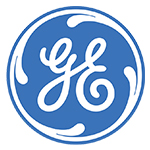

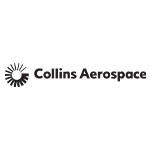







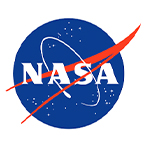

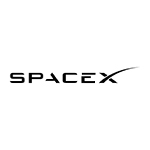
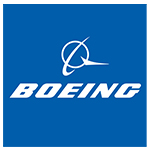


This resource page is for nitric oxide gas detectors
To facilitate our customers to select our products, we have further classified Nitric Oxide Gas Detectors by their features:
Alarm-enabled, Handheld, High precision, Data logging, Outdoor, and Rugged
Below are other resources containing useful information on Nitric Oxide Gas Detectors:
FAQs on nitric oxide gas detectors on GAOTek.com
How to Choose Nitric Oxide Gas Detectors
Components of nitric oxide gas detectors
Operation, Maintenance & Calibration of nitric oxide gas detectors
Customers in the U.S. and Canada of nitric oxide gas detectors
Contact Us
Here are GAO Tek’s nitric oxide gas detectors and they are further organized by feature:
Alarm-enabled, Handheld, High precision, Data logging, Outdoor, and Rugged
We ship overnight to anywhere in the continental U.S. and Canada from one of our local warehouses.
If you have any questions about our products or want to place an order, our technical experts can help you.
Please fill out this form or email us
